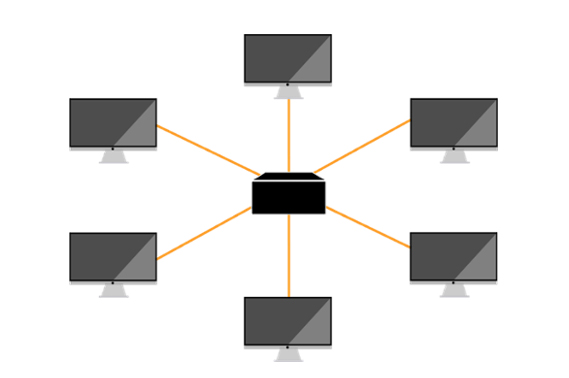Everything You Need to Know About a Wireless Mesh Network
Johanna Brito, Marketing Communications Manager on May 24, 2018
This blog was originally posted on Grandstream.com
The idea is simple- mesh means that various mesh nodes help spread a network connection across a large area by “talking” to each other and forming a connection. Essentially, a wireless mesh network is an alternative to the traditional WiFi solution that uses access points and wired links to create a network. In scenarios where having a wired network connection is not possible either due to environmental restrictions or resources, having a solution that supports wireless mesh technology is important.
What’s even better is that mesh networks are truly wireless because they don’t rely on wires to communicate between nodes and tend to deliver fast, efficient and reliable networks regardless of location. This is particularly important for outdoor deployments where WiFi devices are challenging to implement.
So, what are mesh nodes?
Before we dig into how exactly mesh networks work, let’s talk about mesh nodes. Mesh nodes are small radio transmitters that serve as the wireless router in a traditional WiFi network solution with access points and routers. Unlike wired or wireless networks that use WiFi devices to communicate and transfer information, these nodes are programmed to interact or “talk” to each other in mesh networks. They pass information by hopping wirelessly from one node to the next in a quick and safe path through a process known as dynamic routing. These nodes use the traditional WiFi standards of 802.11a/b/g to communicate with each other and with users.
How to create Mesh Networks
To form a mesh network, only one node needs to be wired to a network connection such as an Internet modem or router. The connected node can then share its Internet connection wirelessly between the rest of the nodes within its range. The more nodes available, the bigger the network it creates.
Defining Mesh Topologies and its types
Because there are different intended purposes when creating a network, mesh networks can be configured and set up in various ways— that’s where network topologies come in. A network topology refers to the varying layouts available for different nodes to connect to with each other as well as how they communicate. Physical topologies are the way nodes are physically connected to each other (usually through wires) while logical topologies refer to the way network devices appear to be connected to each other. For example, if site 1 is connected to site 2, the actual physical route might have to go through different switching points depending on the physical layout of the network, but the logical topology is a simpler representation of site 1 connected to site 2.
There are six types of network topologies: Bus, Hybrid, Mesh, Ring, Star and Tree.
Bus Topology refers to a network type where every computer and network device is connected to a single cable. This topology transmits data in one direction and every device is connected to a single cable.
Hybrid Topology is a mixture of two or more topologies. For example, if one office uses bus topology and needs to be connected to another office that uses ring topology.
Mesh Topology is a point-to-point connection to other nodes or devices. This means that all network nodes are connected to each other.
Ring Topology is when each node is connected to one another with the last one connected to the first, forming a ring.
Star Topology means that all nodes are connected to a single hub through a cable and is visually represented as a star. The hub is the main node which all other nodes are connected to. Basically, the hub acts as the repeater for data transmission and every node has its own connection to the hub.
Tree Topology refers to all nodes connected to a root node forming a hierarchy. This hierarchy requires at least three levels.

Users can deploy mesh networks and all of the above types of topologies with our GWN7600 and GWN7600LR access points, but we officially support star topology. Star topology is one of the most common network configurations because of its centralized and manageable features. The communication flow in a star topology is managed from the central access point (CAP) and then distributed throughout the different nodes connected to it. For example, if computer 1 wants to send data to computer 2, then computer 1 will forward that message to the CAP which will then check the address of the destination computer, then forward that data. No information is stored in the CAP, but rather serves as the point of contact to distribute the information between nodes. This topology can be implemented with Ethernet or cabled structures, wireless routers, or any other components, making it extremely adaptable to your network structure. Users like star topology because of its flexibility as it’s easy to add computers to networks and can continue to operate with no interruptions even if one computer fails.
There are many advantages of mesh networks, but perhaps the most common one is that it’s a cost-effective and an easy-to-deploy solution. That means using less wires to form a truly wireless solution that can cover large areas, relies on the most common WiFi standards and is automated in that it can automatically find the fastest and most efficient path to transmit data. Also, it’s extremely adaptable and expandable because it’s easy to install and uninstall nodes depending on the coverage area needed.







